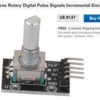I currently have a turntable with15 stubs. The controls for it are on my control panel which has a drawing of the stubs. On each stub line I have both a mini DPDT switch connected to a bi-color led that I use to manually turn on/off power to that stub. The bi-color led is red when no power and green when on.
I am rewiring the layout and I would like to eliminate all these switches and use a rotary switch instead. I would still like to have a bi-color led on each stub.
What I need for the rotary is:
- capacity for 15 positions
- has the functionality to change rotary positions without applying power to each stub as I turn the rotary from i.e., position 4 - 7. I do not want the rotary to apply any power to positions 5-6 but only when I reach position 7.
- I still want to have individual bi-color leds for each stub that hopefully could be triggered from the same rotary switch. I hope this makes sense. I just don't know enough about rotary switches and terminology to know what to search for to accomplish what I am trying to do.
Note - I have both an old school type control panel that I use in addition to using DCS/AIU for control I want to continue to have the ability to operate either from the control panel or using DCS.
I am open to any alternative solutions. It does not need to be a rotary switch. One solution I thought about using was a flat touch digital keyboard connected to an arduino microprocessor. While that would be a fun project it would be unnecessarily complicated.
Thanks,
Ed

















